A Comprehensive Guide to Lightning Protection Systems in the UAE
For engineers, panel builders, and facility managers overseeing high-value assets in the UAE, a lightning protection system is not an optional add-on. It is a critical, engineered solution designed to intercept a direct lightning strike and channel its immense electrical energy safely to the ground. Without this vital defense, that energy can devastate your structure and cripple operations.
Why Lightning Protection is Essential for UAE & GCC Infrastructure
The arid climate of the UAE and the wider GCC can create a dangerous misconception that lightning is not a significant threat. However, the region experiences intense, frequent thunderstorms that pose a severe risk to our critical infrastructure, iconic skyscrapers, and sprawling industrial hubs. The financial and operational fallout from a single strike is immense.
For an engineer or procurement professional, a lightning protection system must be a non-negotiable component of any risk management strategy. A direct hit can instantly paralyze operations and destroy millions of dirhams worth of sensitive electrical components. Consider the consequences:
- Catastrophic Equipment Failure: A direct strike or nearby surge can destroy control panels, servers, PLCs, and essential machinery.
- Operational Shutdowns: In key sectors like oil and gas, manufacturing, or logistics, even a brief shutdown can result in millions in lost revenue.
- Data Loss and Corruption: Data centers and modern commercial buildings rely on stable power. A surge can wipe out mission-critical data in seconds.
- Severe Safety Hazards: An uncontrolled lightning discharge creates a significant fire risk and is a direct threat to personnel safety.
The notion that lightning is rare in the desert is a myth that exposes facilities across the UAE and Saudi Arabia to unnecessary risk. A professionally designed lightning protection system is a fundamental component of modern construction and asset protection, not a luxury.
A Growing Regional Imperative
The data underscores this reality. Across the Middle East & Africa (MEA) region, there have been over 420,000 recent installations of earthing and lightning protection systems, with over half located in the UAE and Saudi Arabia. This trend is driven by high-risk sectors like oil refineries, airports, and logistics centers, where operational continuity is paramount. You can explore these regional market trends in more detail through various detailed industry reports.
This proactive adoption demonstrates a clear understanding among industry leaders: the investment in a robust lightning protection system is minor compared to the devastating cost of a single incident. At GoSwitchgear, we supply the essential electrical components UAE businesses need to build these critical defense systems.
Anatomy of a Modern Lightning Protection System
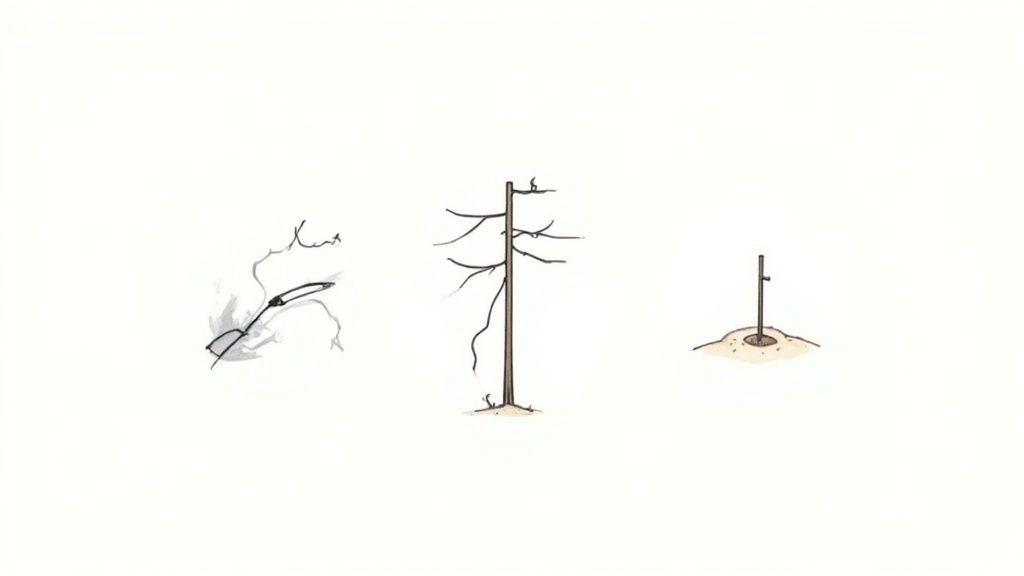
A modern lightning protection system is a comprehensive defense shield comprising two distinct but interconnected layers: an external system to handle direct strikes and an internal system to protect sensitive electronics from electrical surges. For the system to be effective, both layers are essential. A common and costly mistake is installing external rods and conductors without addressing the risk of internal surges, leaving your most valuable assets completely vulnerable.
The External Shield: Capturing and Diverting Raw Energy
The external system is the visible, first line of defense. Its sole purpose is to create a path of least resistance—a highly conductive pathway that guides the immense energy of a lightning strike away from your structure and harmlessly into the earth.
This shield is built from three core components:
- Air Terminals (Lightning Rods): These are the metal rods strategically placed on a building's highest points (rooftops, parapets) to intercept a lightning flash before it strikes a more destructive path.
- Down Conductors: These are heavy-duty cables connecting the air terminals to the earthing system. Proper routing is critical; sharp bends create high impedance and risk a "side-flash," where energy jumps to another conductive part of the building.
- Earthing System (Grounding): This is the most critical part of the setup—a network of buried conductors (e.g., copper-clad steel rods) engineered to safely disperse the massive electrical charge into the earth. A high-resistance ground connection compromises the entire system.
Material Selection for the GCC Climate
In the UAE and wider GCC, material selection must account for the harsh environment. The combination of extreme heat, high humidity, and salty coastal air creates an incredibly corrosive atmosphere that can degrade inferior materials rapidly.
- Copper: The gold standard for its excellent conductivity and natural corrosion resistance. It is the preferred choice for down conductors and earthing components requiring long-term reliability.
- Aluminium: A lighter, more cost-effective option for air terminals. However, it requires expert installation to prevent galvanic corrosion when in direct contact with dissimilar metals like copper or steel.
For any project in coastal areas like Dubai or Abu Dhabi, specifying high-grade, corrosion-resistant materials like copper is essential for the long-term integrity of your system. An IP rating and quality certifications (e.g., IEC) are vital indicators of a component's suitability for this climate.
The Internal Guard: Protecting Your Sensitive Electronics
While the external shield protects the structure, the internal lightning protection system safeguards the delicate electronics inside. A nearby strike can induce powerful electrical surges through power lines and data cables, destroying sensitive equipment. This is where Surge Protection Devices (SPDs) are indispensable.
SPDs act as pressure-relief valves for your electrical network. They constantly monitor voltage and, upon detecting a dangerous spike, instantly divert the excess energy to the ground. A coordinated SPD installation is non-negotiable for any modern facility in the UAE, especially those with:
- Building Management Systems (BMS)
- Programmable Logic Controllers (PLCs)
- Variable Frequency Drives (VFDs)
- Data centers and server rooms
- Advanced security and fire alarm panels
These systems are the nerve center of your operation and are extremely vulnerable. GoSwitchgear offers a range of electrical surge protection solutions, a key part of any energy management solution Dubai facilities implement. Without this internal guard, your external shield is only doing half the job.
How to Design a Compliant System for the GCC
Designing a lightning protection system in the UAE and GCC is a serious engineering task that demands a meticulous, standards-driven approach to guarantee safety and reliability. For engineers and panel builders, the process must be rooted in international standards, primarily IEC 62305, while also addressing unique local challenges like heat and dust.
A compliant design begins with a thorough risk assessment. This is not a simple checklist but a calculated evaluation to determine the precise level of protection a facility needs. Skipping this step means you could over-engineer a system and waste project funds, or worse, under-engineer one that fails under load.
The Cornerstone of Design: A Risk Assessment
The entire system design—from conductor spacing to component selection—is determined by the risk assessment outlined in IEC 62305-2. This process systematically analyzes all variables to assign the correct Lightning Protection Level (LPL).
Key factors in the assessment include:
- Building Characteristics: The structure’s dimensions (height, width, length), its location (e.g., an isolated tower vs. one in a dense urban area), and its construction materials.
- Occupancy and Use: A data center or hospital has far more at stake than a simple warehouse, impacting the required level of protection.
- Consequences of a Strike: This evaluates the potential for loss of human life, interruption of essential public services, or the direct financial impact of equipment damage and operational downtime.
- Presence of Flammable Materials: For the region's oil and gas sector, the presence of explosive atmospheres dramatically increases the required protection level due to the catastrophic potential of an ignition-causing strike.
Based on this analysis, the facility is assigned one of four levels, from LPL I (highest protection) to LPL IV (lowest protection).
IEC 62305 Lightning Protection Levels (LPL) Summary
| Protection Level (LPL) | Interception Efficiency | Peak Current (kA) | Typical Application |
|---|---|---|---|
| LPL I | 99% | 200 kA | Nuclear facilities, chemical plants, sites with explosives |
| LPL II | 97% | 150 kA | Hospitals, data centers, public venues |
| LPL III | 90% | 100 kA | Commercial buildings, industrial plants, schools |
| LPL IV | 80% | 100 kA | Small residential or agricultural structures |
This table provides a clear roadmap for the system's performance requirements once the risk assessment is complete.

Key Installation Practices for GCC Conditions
A superior design is rendered useless by poor installation. In the harsh GCC environment, adherence to best practices is critical for system longevity and performance.
A common and dangerous installation mistake is improper conductor routing. Sharp bends create higher impedance, which can cause lightning current to "flash over" to nearby metallic structures, bypassing the intended safe path.
Follow these practical installation tips to avoid common pitfalls:
- Proper Bonding is Non-Negotiable: All major metallic systems (water pipes, HVAC ducts, electrical conduits) must be bonded to the lightning protection system. This creates an equipotential plane, preventing dangerous voltage differences during a strike, a core principle of IEC 62305.
- Strategic Conductor Routing: Down conductors require the most direct path possible from air terminals to the earth. IEC standards specify minimum bend radii to maintain low impedance.
- Achieving Low Earth Resistance: A major challenge in the GCC's sandy, rocky soil. Achieving the target resistance of 10 ohms or less often requires advanced techniques, such as installing multiple interconnected rods or using soil-enhancing materials to improve conductivity.
- Coordination with Internal Protection: The external system must work in concert with internal Surge Protection Devices (SPDs). The placement of Type 1 SPDs at the main service entrance is directly influenced by the external system's design. As part of a complete strategy, selecting precise internal components, like a solid-state relay for sensitive equipment control, is crucial for comprehensive protection.
The Essential Role of Surge Protection Devices
While an external lightning protection system shields your building's structure, your sensitive electronics remain vulnerable to powerful electrical surges. A nearby strike can induce destructive transients through power and data lines, destroying critical equipment. This is why Surge Protection Devices (SPDs) are essential internal bodyguards for your facility.
An SPD acts as a high-speed pressure relief valve for your electrical network. It monitors voltage and, in nanoseconds, diverts dangerous spikes safely to the ground. For any modern facility in the UAE—whether a data center, manufacturing plant, or commercial tower—a coordinated SPD strategy is a non-negotiable part of your energy management solution Dubai.
Understanding the Different Types of SPDs
A single surge protector is insufficient. An effective strategy uses a "cascaded" approach, placing different types of SPDs at key points throughout your electrical system to create a layered defense. This tiered shield progressively attenuates surge energy as it travels toward your most sensitive devices.
The IEC 62305 standard defines three main SPD types:
- Type 1 SPD: The first line of defense, installed at the main service entrance. It is built to handle the massive energy from a direct lightning strike entering through power lines.
- Type 2 SPD: Installed in sub-distribution boards, this SPD manages residual surge energy that bypasses the Type 1 device and handles surges generated internally (e.g., by large motors).
- Type 3 SPD: The final, precision layer of protection, placed near sensitive end-use equipment like PLCs, VFDs, and servers, to guard against low-energy transients.
A coordinated approach is essential. Without a Type 1 SPD, a powerful surge can overwhelm and destroy downstream Type 2 and 3 devices. The goal is to create a seamless shield from the main electrical panel to the final circuit.
Strategic Placement for Maximum Protection
Effective surge protection is about deploying the right device in the right location. For any commercial or industrial facility in Dubai or Abu Dhabi, a robust strategy involves installing SPDs at multiple levels.
Coordinated SPD Installation Strategy
| Location in Facility | SPD Type Required | Purpose |
|---|---|---|
| Main Electrical Panel | Type 1 | Protects against direct lightning currents and large external surges from the grid. |
| Sub-Distribution Boards | Type 2 | Manages residual surges and those generated by internal equipment. |
| Final Circuits | Type 3 | Provides fine protection for sensitive or critical equipment at the point of use. |
By following this layered defense, voltage spikes are safely managed at every stage. For engineers and panel builders, selecting the right device for each location is paramount. Explore a full range of components by reviewing our guide on electrical surge protection solutions available from GoSwitchgear.
The Rise of Smart Surge Protection in the UAE
Surge protection technology is evolving. IoT-enabled surge arresters are becoming an invaluable tool for proactive facility management in a region committed to smart infrastructure. These devices provide real-time data and remote monitoring, enabling predictive maintenance.
This evolution is reflected in market trends. The regional market for lightning arresters was recently valued at USD 681.93 million, driven by high demand in leading markets like Saudi Arabia and the UAE. You can learn more about these regional market dynamics to understand the shift towards smarter grid components. This allows facility managers to move from a reactive to a predictive maintenance model, receiving alerts before a device fails and ensuring the lightning protection system is always operational.
Protecting Specialized and High-Risk Facilities
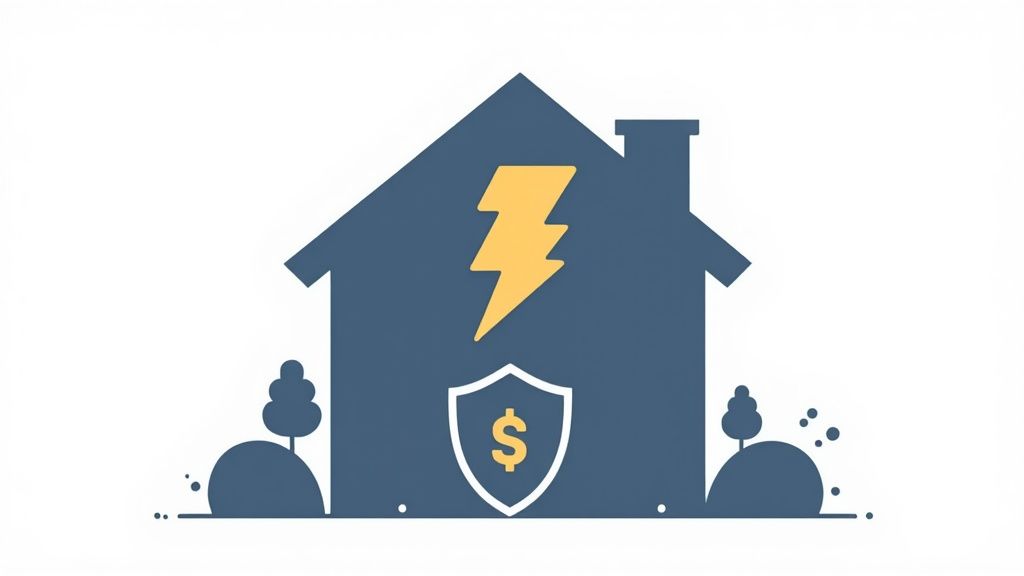
While standard systems are adequate for most commercial buildings, they are insufficient for the GCC’s most critical and hazardous facilities. In high-stakes environments like oil and gas refineries, airports, or large-scale renewable energy projects, a one-size-fits-all approach is dangerously inadequate. These sectors require advanced, purpose-built protection strategies tailored to their unique operational risks and environmental challenges.
Oil and Gas Facilities
In the oil and gas industry, a lightning strike is a potential catastrophe. Facilities in Abu Dhabi's industrial zones or Saudi Arabia's energy hubs contain highly volatile materials, creating explosive atmospheres (ATEX zones).
For these environments, every component of the lightning protection system must be intrinsically safe and designed for:
- Spark Prevention: All components must be engineered to prevent any spark that could ignite airborne gases or dust.
- Material Integrity: Components must withstand the intensely corrosive conditions common in processing plants, ensuring long-term reliability.
- Specialized Grounding: Advanced earthing techniques are required to safely dissipate immense currents without creating dangerous step and touch potentials for personnel.
Aviation and Airport Infrastructure
Airports are sprawling complexes of vital infrastructure where downtime is not an option. A top-tier lightning protection system is an operational necessity to protect control towers, sensitive navigation systems, and terminals. The market for aircraft lightning protection in the Middle East was recently valued at USD 0.16 billion, driven by the region's massive investments in aviation. As passenger numbers grow, mitigating the lightning threat is a major operational concern.
Renewable Energy Projects
The UAE’s massive solar farms, like the Mohammed bin Rashid Al Maktoum Solar Park, present a unique challenge. A solar farm is effectively a giant, metallic grid spread over several square kilometers, making it a prime target for lightning. A single strike can cause a domino effect, destroying hundreds of solar panels and inverters.
Protecting these assets requires a specialized approach:
- Grid-Like Grounding: A comprehensive earthing mesh beneath the entire array creates a low-resistance path to ground.
- Strategic Air Terminals: Terminals are meticulously placed to provide a protective shield without casting performance-reducing shadows on panels.
- Coordinated SPDs: A multi-layered SPD strategy is critical to protect inverters and control systems from surges traveling along extensive DC and AC cabling.
Integrating a dependable under-voltage protection relay into the control circuitry adds a crucial layer of defense against grid instability following a lightning event.
A Practical Guide to System Maintenance and Testing
A lightning protection system requires consistent, professional maintenance to ensure its long-term effectiveness, especially in the harsh GCC climate where heat, humidity, dust, and salt accelerate wear. Proactive upkeep is not just recommended; it is essential for compliance with IEC 62305-3 and the genuine protection of your assets.
Hidden failures like corroded connections or a degraded grounding network can render a system useless. Regular inspections and testing are non-negotiable to turn your initial investment into lasting security.
Core Maintenance and Inspection Schedule
Adapting the tiered inspection approach of IEC 62305 for demanding GCC conditions is a smart best practice. Here is a practical maintenance checklist for an annual inspection:
- Visual Inspection: Conduct a thorough check of all visible components—air terminals, conductors, and bonding connections—for signs of corrosion, physical damage, loose mountings, or broken conductors.
- Continuity Testing: This test verifies an unbroken electrical path from the air terminals to the earthing system, ensuring the pathway is clear.
- Connection Integrity: Physically check that all clamps, connectors, and bonds are tight and secure, as thermal cycling and vibrations can loosen them over time.
The Critical Role of Earth Resistance Testing
The most critical maintenance task is the earth resistance test. The earthing system's effectiveness depends entirely on maintaining a low-resistance path to the ground, with a target of 10 ohms or less.
In the GCC's sandy and dry soil, earth resistance can increase due to seasonal moisture changes. An annual test is the only way to verify that your system can still safely dissipate a massive electrical charge.
If testing reveals high resistance, immediate corrective action is required. This may involve installing additional ground rods or using soil enhancement materials. Without a low-impedance path to ground, your lightning protection system is compromised, placing your facility and personnel at severe risk.
Common Questions About Lightning Protection
Engineers and procurement teams across the UAE frequently ask practical questions when specifying a lightning protection system. Here are clear, solution-focused answers to some of the most common inquiries.
What's the Real Difference Between a Lightning Arrester and a Surge Arrester?
Though often used interchangeably, these devices serve distinct roles.
A lightning arrester is a heavy-duty device, typically installed outdoors on power lines or at substations, designed to handle the massive energy of a direct lightning strike.
A surge arrester, or Surge Protection Device (SPD), is an internal guard engineered to protect sensitive equipment from smaller, faster electrical surges generated within a building. Both are required for a complete protection strategy.
Does a Lightning Protection System Attract Lightning?
No. This is a common myth. A lightning protection system does not attract or prevent lightning. Its function is purely defensive. It provides a pre-determined, low-resistance path to guide the lightning's energy safely into the ground, away from the building's structure and critical equipment.
How Much Will a System Cost in Dubai or Abu Dhabi?
There is no standard price for a lightning protection system in Dubai or Abu Dhabi. The cost depends on a detailed risk assessment per IEC 62305, which considers factors like the building's size, complexity, and the required Lightning Protection Level (LPL). The focus should be on achieving full compliance and effective risk mitigation, not just the initial price.
How Often Should We Get Our System Tested in the UAE?
For any facility in the UAE, annual testing is the best practice. The region’s harsh environmental conditions—dust, extreme heat, and humidity—can degrade components faster than in other climates. While visual checks are useful, an annual earth resistance test is the only way to be certain your system remains fully functional, compliant, and ready to perform when needed.
For expert guidance on selecting the right components for your lightning protection projects in the UAE and GCC, trust GoSwitchgear.
Explore our complete catalogue of electrical components and instruments at https://goswitchgear.ae.


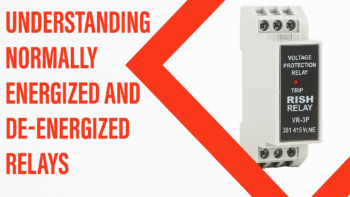
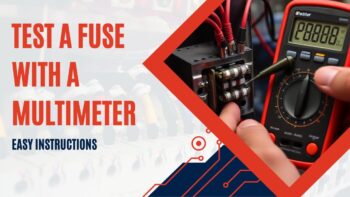

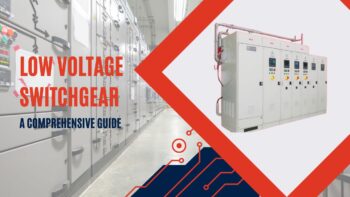

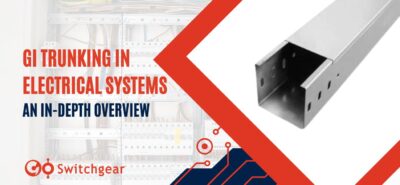

Leave a Reply